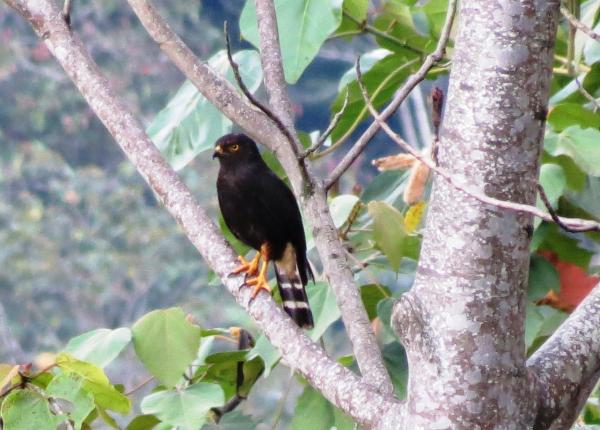Did You Know?
- Very little is known about the biology and behavior of this species
How The Peregrine Fund is Helping
The Peregrine Fund is not working directly with White-rumped Hawks, but our conservation efforts through habitat protection, education, and community outreach extend to all raptor species, including this owl. We also supply literature to researchers from our avian research library, which helps scientists around the world gather and share important information on raptor conservation. And, we support the Neotropical Raptor Network that promotes raptor conservation by helping create collaboration and communication among conservationists in the region. We also have created the Global Raptor Impact Network, which gives raptor researchers tools to more efficiently conduct their own studies while contributing to a global program. GRIN also provides citizen scientists a way to participate in raptor science and conservation.
Where They Live
The White-rumped Hawk is a Neotropical species found throughout most of South America. It is found in middle elevation habitats including montane forests and forest edges.
What They Do
This beautiful hawk is appropriately named. It has a bright, white rump that contrasts sharply with the overall shiny black plumage that covers this bird's head, back, wings, breast, and belly. It has a black tail marked with several white bars, yellow eyes, legs, and cere. This hawk soars frequently over the forest, either by itself or in pairs. It does this most often in the early morning hours. It also tends to perch on open branches within or below the forest canopy.
Why They Need our Help
While this species is categorized as a species of Least Concern, this species has not been well-studied and it could be uncommon throughout its range.
What They Eat
Biologists know very little about the feeding habits of the White-rumped Hawk. It preys upon small mammals, mostly rats, as well as reptiles, frogs, and insects.
Nests, Eggs, and Young
Just as very little is known about this species' feeding habits, we also don't know much at all about its breeding biology. Only a few nests have been discovered. Thanks to biologists who have taken the time to study these nests, we know that they build a cup-shaped nest composed of sticks and twigs. The nests are lined with green leaves. The female will lay two creamy-white eggs.Apart from this, not much else is known.
White-rumped Hawk and the World Center for Birds of Prey
The World Center for Birds of Prey offers fun ways to learn about birds of prey. Interactive activities, tours, interesting videos and a children's room with activities from coloring sheets to quizzes to costumes await you on your visit. Though we don't have any White-rumped Hawks on our Avian Ambassadors team, you can meet a few live hawks up close including a Red-tailed Hawk and a Swainson's Hawk. There is also a touch table with owl feathers and other natural objects available for exploration.
References:
Bierregaard, R. O., P. F. D. Boesman, E. de Juana, and J. S. Marks (2020). White-rumped Hawk (Parabuteo leucorrhous), version 1.0. In Birds of the World (J. del Hoyo, A. Elliott, J. Sargatal, D. A. Christie, and E. de Juana, Editors). Cornell Lab of Ornithology, Ithaca, NY, USA. https://doi.org/10.2173/bow.whrhaw1.01
Global Raptor Information Network. 2021. Species account: White-rumped Hawk Parabuteo leucorrhous. Downloaded from http://www.globalraptors.org on 10 Sep. 2021










